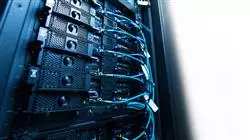University certificate
The world's largest faculty of information technology”
Introduction to the Program
Take a step forward with this Postgraduate diploma in Distributed Computing and delve into the most cutting-edge techniques in computer science”

When discussing the widespread use of smartphones in daily life or the introduction of 5G as the new communication standard, a new realm of possibilities is emerging for computer scientists proficient in Distributed Computing. As time progresses, the degrees of processing and processing speed will continue to increase, which emphasizes the need for computer professionals to be adequately prepared to program at a higher level.
Indeed, this Postgraduate diploma is designed to provide computer professionals with the necessary knowledge and skills in the field of Distributed Computing. Students will receive a comprehensive education in everything related to Distributed Computing, tailored to the demands of today's market, thanks to a teaching team with extensive experience in managing and directing IT projects of this type.
In addition, the degree is offered as a fully online program, making it convenient to integrate with other personal or professional commitments. There are no in-person classes or set schedules; instead, computer scientists have the freedom to download the entire syllabus and allocate their study hours according to their own preferences.
Achieve a significant promotion in your professional career by showcasing your advanced programming and distributed management skills through postgraduate diploma”
This Postgraduate diploma in Distributed Computing contains the most complete and up-to-date program on the market. The most important features include:
- The program includes the development of case studies presented by experts in Parallel and Distributed Computing
- The program is designed with graphical, schematic, and highly practical content, which gathers essential information about disciplines that are crucial for the professional practice
- Practical exercises where self-assessment can be used to improve learning
- Its special emphasis on innovative methodologies
- The program incorporates theoretical lessons, interactive question-and-answer sessions with experts, and individual reflection assignments
- Content that is accessible from any fixed or portable device with an Internet connection
Gain valuable tips and insights from highly successful professionals who have been leaders in international development projects”
The teaching staff of the program consists of professionals from the industry who bring their valuable work experience to the table. Additionally, renowned specialists from leading societies and prestigious universities contribute their expertise to enrich the program.
The program's multimedia content, created using state-of-the-art educational technology, enables professionals to learn in a contextual and situated learning environment. This simulated environment offers immersive education specifically designed to prepare individuals for real-world situations.
The program's design emphasizes Problem-Based Learning, requiring professionals to actively solve various real-world practice situations that are presented to them throughout the academic year. For this purpose, the student will be assisted by an innovative interactive video system created by renowned and experienced experts.
The teaching staff of the program consists of professionals from the industry who bring their valuable work experience to the table. Additionally, renowned specialists from leading societies and prestigious universities contribute their expertise to enrich the program.
The program's multimedia content, created using state-of-the-art educational technology, enables professionals to learn in a contextual and situated learning environment. This simulated environment offers immersive education specifically designed to prepare individuals for real-world situations.
The program's design emphasizes Problem-Based Learning, requiring professionals to actively solve various real-world practice situations that are presented to them throughout the academic year. For this purpose, the student will be assisted by an innovative interactive video system created by renowned and experienced experts"

TECH will provide you with the support and resources you need to achieve your most ambitious professional goals"
Why study at TECH?
TECH is the world’s largest online university. With an impressive catalog of more than 14,000 university programs available in 11 languages, it is positioned as a leader in employability, with a 99% job placement rate. In addition, it relies on an enormous faculty of more than 6,000 professors of the highest international renown.

Study at the world's largest online university and guarantee your professional success. The future starts at TECH”
The world’s best online university according to FORBES
The prestigious Forbes magazine, specialized in business and finance, has highlighted TECH as “the world's best online university” This is what they have recently stated in an article in their digital edition in which they echo the success story of this institution, “thanks to the academic offer it provides, the selection of its teaching staff, and an innovative learning method aimed at educating the professionals of the future”
A revolutionary study method, a cutting-edge faculty and a practical focus: the key to TECH's success.
The most complete study plans on the university scene
TECH offers the most complete study plans on the university scene, with syllabuses that cover fundamental concepts and, at the same time, the main scientific advances in their specific scientific areas. In addition, these programs are continuously being updated to guarantee students the academic vanguard and the most in-demand professional skills. In this way, the university's qualifications provide its graduates with a significant advantage to propel their careers to success.
TECH offers the most comprehensive and intensive study plans on the current university scene.
A world-class teaching staff
TECH's teaching staff is made up of more than 6,000 professors with the highest international recognition. Professors, researchers and top executives of multinational companies, including Isaiah Covington, performance coach of the Boston Celtics; Magda Romanska, principal investigator at Harvard MetaLAB; Ignacio Wistumba, chairman of the department of translational molecular pathology at MD Anderson Cancer Center; and D.W. Pine, creative director of TIME magazine, among others.
Internationally renowned experts, specialized in different branches of Health, Technology, Communication and Business, form part of the TECH faculty.
A unique learning method
TECH is the first university to use Relearning in all its programs. It is the best online learning methodology, accredited with international teaching quality certifications, provided by prestigious educational agencies. In addition, this disruptive educational model is complemented with the “Case Method”, thereby setting up a unique online teaching strategy. Innovative teaching resources are also implemented, including detailed videos, infographics and interactive summaries.
TECH combines Relearning and the Case Method in all its university programs to guarantee excellent theoretical and practical learning, studying whenever and wherever you want.
The world's largest online university
TECH is the world’s largest online university. We are the largest educational institution, with the best and widest online educational catalog, one hundred percent online and covering the vast majority of areas of knowledge. We offer a large selection of our own degrees and accredited online undergraduate and postgraduate degrees. In total, more than 14,000 university degrees, in eleven different languages, make us the largest educational largest in the world.
TECH has the world's most extensive catalog of academic and official programs, available in more than 11 languages.
Google Premier Partner
The American technology giant has awarded TECH the Google Google Premier Partner badge. This award, which is only available to 3% of the world's companies, highlights the efficient, flexible and tailored experience that this university provides to students. The recognition as a Google Premier Partner not only accredits the maximum rigor, performance and investment in TECH's digital infrastructures, but also places this university as one of the world's leading technology companies.
Google has positioned TECH in the top 3% of the world's most important technology companies by awarding it its Google Premier Partner badge.
The official online university of the NBA
TECH is the official online university of the NBA. Thanks to our agreement with the biggest league in basketball, we offer our students exclusive university programs, as well as a wide variety of educational resources focused on the business of the league and other areas of the sports industry. Each program is made up of a uniquely designed syllabus and features exceptional guest hosts: professionals with a distinguished sports background who will offer their expertise on the most relevant topics.
TECH has been selected by the NBA, the world's top basketball league, as its official online university.
The top-rated university by its students
Students have positioned TECH as the world's top-rated university on the main review websites, with a highest rating of 4.9 out of 5, obtained from more than 1,000 reviews. These results consolidate TECH as the benchmark university institution at an international level, reflecting the excellence and positive impact of its educational model.” reflecting the excellence and positive impact of its educational model.”
TECH is the world’s top-rated university by its students.
Leaders in employability
TECH has managed to become the leading university in employability. 99% of its students obtain jobs in the academic field they have studied, within one year of completing any of the university's programs. A similar number achieve immediate career enhancement. All this thanks to a study methodology that bases its effectiveness on the acquisition of practical skills, which are absolutely necessary for professional development.
99% of TECH graduates find a job within a year of completing their studies.
Postgraduate Diploma in Distributed Computing.
Distributed computing is a field of computer science that focuses on the use of multiple interconnected computing systems to work together as if they were a single entity. In distributed computing, the resources of interconnected computing systems, such as processing, storage, and memory, are used together to perform specific tasks.
The development of distributed computing involves the use of techniques to coordinate and manage the resources of interconnected systems. Distributed systems use communication protocols to coordinate data exchange, control access to resources, and manage load balancing between different systems.
Applications that use distributed computing.
Web search: search engines use distributed computing to index and search for information on the web.
Scientific research: scientists use distributed computing to handle large data sets and process complex simulations.
Social networking: social networking systems use distributed computing to support large numbers of users and handle large amounts of information.
To develop distributed computing applications, it is necessary to have a wide knowledge of the fundamental principles of distributed computing. This includes knowledge of communication protocols such as TCP and UDP, distributed system architectures, distributed storage systems such as Hadoop, and distributed database systems. Experience in programming languages such as Java, Python, C++ and Ruby, which are commonly used in distributed computing application development, as well as tools and technologies specific to different distributed systems, such as Apache Spark and Kafka for Apache Hadoop, is also required.
Distributed computing is a field of computer science that focuses on the use of multiple interconnected systems to work together as if they were a single entity. The development of distributed computing involves the use of techniques to coordinate and manage the resources of interconnected systems, and requires knowledge in communication protocols, distributed system architectures, programming languages and tools specific to different distributed systems.







